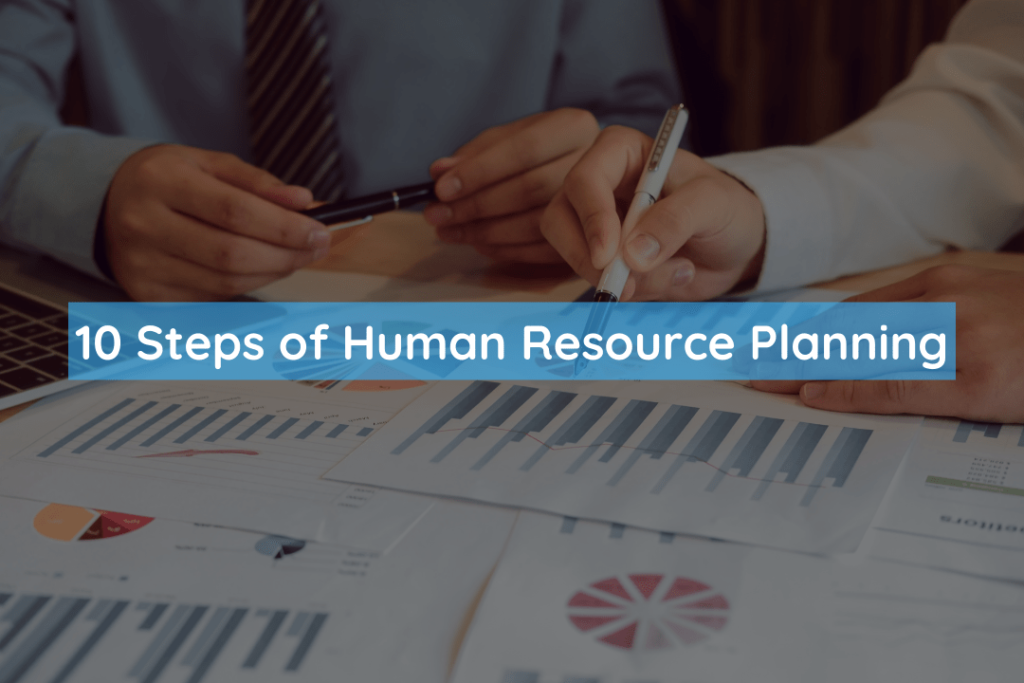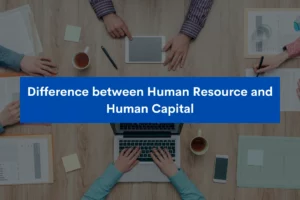People are an organization's greatest asset; they are its cornerstone, yet they are also one of its highest expenses. As a result, before employing new employees, an organization must guarantee that these human assets are properly utilized. There are few steps of human resource planning which are necessary for any organization.

However, when you have hundreds of people, there are going to be inefficiencies in resource allocation, right? Wrong. If we make the appropriate decision, resource inefficiency can be considerably decreased.
It is becoming increasingly challenging in today's organizations to manually determine an exact demand and supply of human resources across the organization.
Why Human Resource Planning is important nowadays for an organization, you should read our previous article that given below.
This is due to the fact that when there are complicated organizational structures, matrix management, and numerous projects, the visibility of work and resources decreases.
It is critical to creating a proper centralized system with the necessary processes if you want to enable precise human resource planning in order to maximize the utilization of your staff.
This means not just any old system, but one that can keep up with your fast-paced organization and track the availability and demand of human resources in real-time to help you close the efficiency gap. When it comes to human resource planning, it's important to locate the correct system.
In the process there are 10 steps of human resource planning, which are must identify:
1. Examine the goals:
The staffing process begins with identifying the goals of the various departments of the organization. Each department, such as management, marketing, manufacturing, finance, and marketing, for example, may have different goals and expectations according to human resources.
Staffing in the process, reducing staff numbers by creating automated processes, and increasing knowledge and skills levels of existing employees for all purposes.
The personnel planning team is able to identify changes that will be needed for the future of the organization by assessing the objectives of each department.
2. Inventory Current Human Resources:
The Human Resources Planning Team should compile an inventory of the current human resources available in the organization once the necessary modifications have been determined.
The current number of people available in the organization, as well as their capacities, talents, and performance abilities, should all be included.
This aids the human resources department in determining the best techniques for filling impending job openings and estimating the costs of internal and external recruitment.
3. Determine the resourcing gaps:
It may appear straightforward that once the supply and demand for human resources have been precisely determined, they must be matched.
It's critical to find a suitable person for the job based on the required skill set, role, training, availability, and field of interest.
This creates a win-win situation for both employees and employers, ultimately increasing the company's profitability. Doesn't it appear to be a difficult task?
4. Determine the current and future supply of human resources:
Because employees are dispersed across the organization - in departments, teams, projects, offices, towns, and countries - it's critical to have a clear picture of the number and quality of individuals you've hired.
To accomplish this, you must have a centralized system in place that allows you to systematically record and manage the following information for the entire organization:
- Personal Capabilities, such as skills, training, and certification.
- Work experience in various positions, projects, and functional areas.
- A person's areas of interest and the various roles that can be played.
- A person's current and projected working hours.
- Scheduled and unscheduled vacations.
- Work schedules for part-time and full-time employees.
5. Forecast the demand and the supply of employees:
The Human Resources Planning team can forecast employee demand based on the objectives of the various divisions of the organization and the inventory of available resources. Aside from that, the supply of employees should be projected depending on the organization's availability and the employee market.
6. Estimate the Deficiency:
Comparing the demand and supply of personnel availability might assist the human resources team in identifying potential gaps in the near future. Employment deficits and surpluses can both occur as a result of the gaps.
Employment deficits represent the number of employees who need to be hired, while employment surpluses represent job terminations or departmental transfers. Aside from that, the gaps can be utilized to show where staff needs to improve their training and development.
7. Formulate Plan:
In this list of steps of human resource planning the next step is the estimation of employment gaps, the Human Resources planning team should establish a plan for employee recruitment, training, and development, termination, inter-departmental transfers, promotion, or early retirement based on the organization's needs.
The employment strategy can change depending on the forecasted deficit or surplus in the demand and supply phases.
8. Implement Plan:
The human resources department should put the human resources plan into action once it has been developed. This should be in line with the organization's overall goals and objectives, as well as the goals and objectives of each department.
9. Review and Evaluate:
Over time, you can assess whether your human resource management strategy has assisted the organization in achieving its goals in areas such as productivity, profitability, retention, and employee satisfaction.
10. Monitor, Control, and Feedback:
Once the human resources plan is in place, it should be checked on a regular basis to ensure that it is aligned with the departments' goals.
The appropriate controls should be implemented, and feedback should be received at each level to measure any flaws in the executed human resources plan.
In order to make the human resources strategy a success, the appropriate changes should be performed based on input gathered during the ongoing process.



